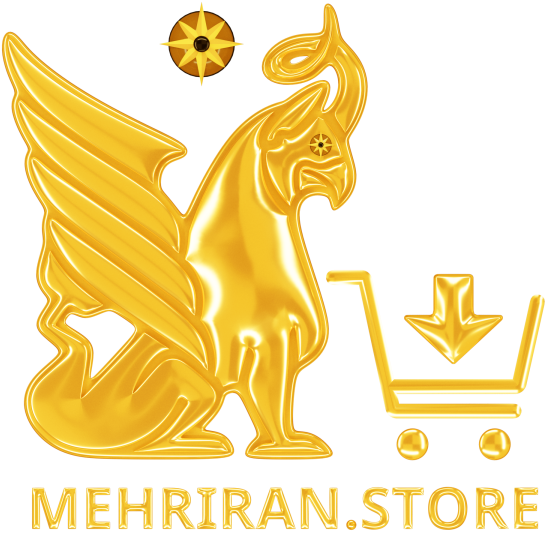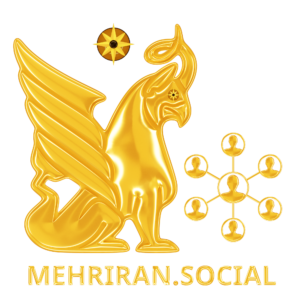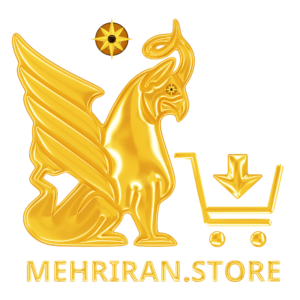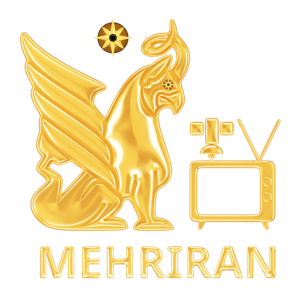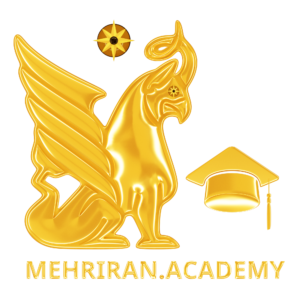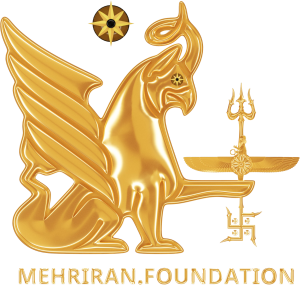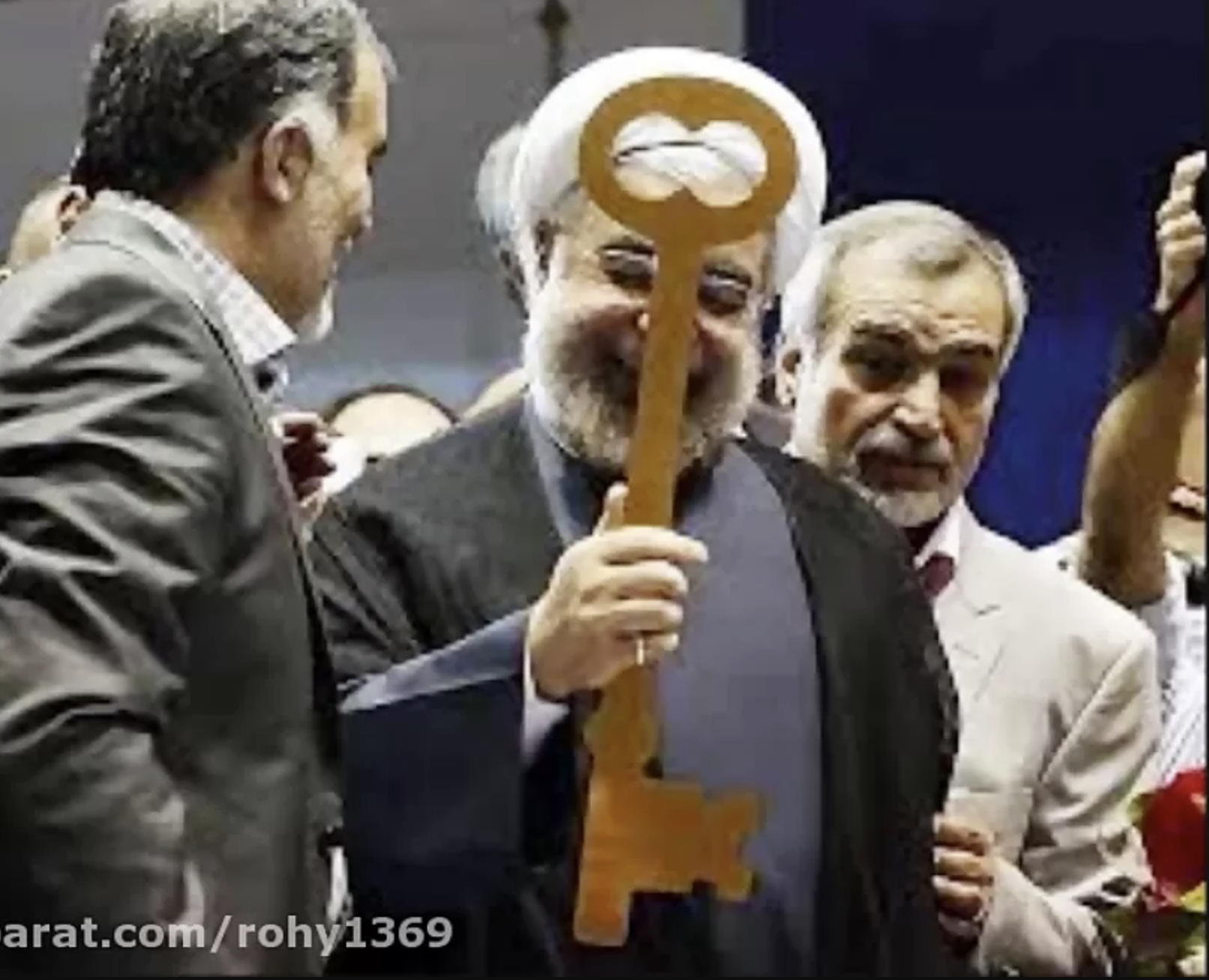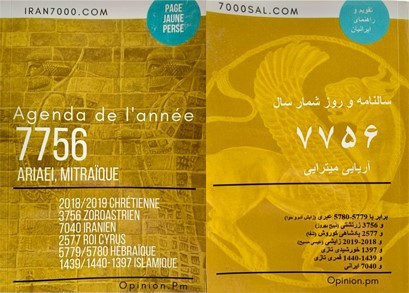NOTICE: If you are not viewing this site in Persian, the content on this page may have been automatically translated using Google Translate and may have some inconsistencies.
NOTICE: If you are not viewing this site in Persian, the content on this page may have been automatically translated using Google Translate and may have some inconsistencies. Dismiss
Menu
the writer: Dr. Reza Hazali (Kay Ashkan Ardalan Afshar Naderi)
18 August 7760 Mithrai (9 August 2022)
Preface to Importance of Tajikistan
The Indo-Iranian languages are among the oldest and richest historical languages in the world, and the high philosophical ideas and worldviews of the people speaking to them are reflected in books such as “Rig Veda” and “Avesta”. The people speaking Aryan languages (Indo-Iranian) lived in the land they called “Iranovich” as in the oldest parts of the Avesta including Meiresht. The land of “Iranovic” or Avestan pronunciation “Iriyah Waje” which means “the origins of the land of the Aryans” or the land of the first Aryans, is in the North Khorasan area of which important parts of it are today located in “Tajikistan”.
Iranovich was the center of the Aryan peoples who later migrated to northern India and the plateau of Iran, Anatolia and Eastern Europe, and even the families such as “Hixos” and “Mitani” and “Caspi”[ii] As far north as Egypt, they laid the foundations of the world’s greatest civilizations of antiquity.
All of these civilization-making peoples came from Aryan or Indo-Iranian and European civilizations from “Iranovich”, which today is a major part of which is in Tajikistan.
Although other parts of Iranovich have been located in other Central Asian countries and their archaeological areas, the importance of “Tajikistan” is that the country is so far in the sphere of “Iranian civilization” and unlike many Central Asian countries that changed cultural identity after the Mongol invasion, “Tajikistan” remains proud on the roof of Asia and on the grain roof of the ancient Iranian culture with all the hardships of the day.
It should also be noted that with the emergence of Islamic-Abrahamic governments in most countries of Iranian civilization, including Iran and Afghanistan, and the replacement of “Iranian identity” with “Abrahamic identity” in these countries, Tajikistan is today the only flag country of ancient civilization of Iran. Therefore, it is important to study and study the land of “Tajikistan” and the Tajik peoples throughout history.
From Iranovich to Tajikistan
The land that we call today “Tajikistan” has been called throughout history by various names that all have their roots in Iranian culture. As mentioned earlier, modern-day Tajikistan and North Khorasan are based on the oldest parts of Avesta including “Mehr Yasht”[iii] Arieh Vajeh, Iranovich[iv] It is called “Arianovich”. The name of this land is given to the land when writing the oldest parts of Indo-Iranian literature in Avesta and Rigveda, from the fifth millennium to the third millennium BC. The archaeological sites of Central Asia, which are all related to “Iranovic”, show the ancient ancient Aryan civilization and the prodigious originality and prodigy of the ancient Aryan civilization. Archaeological Sites of Andronova, B.A.M.C.[vi] And Yaz.[vii] Fully demonstrate the evolution of the highly advanced civilizations of Iriyeh Veje, Iranovich or Arianovich from the Neolithic to the Bronze and Iron Age, and their geography is perfectly consistent with the geography of “Iranovich” in Avas. One of the most important parts of the BC archaeological area today is located in Tajikistan and Balkh in northern Khorasan (Afghanistan). It is quite evident that in the Bronze Age and the beginning of iron, these lands were called “Iriye Waje” or “Iranovich”, although this archaeological field today is for political reasons.[viii] And incorrectly the civilization of Bacteria-Margiana[ix] It is called the Ancient Scriptures. except that which the people of this land would certainly have given it, in the books
And the classical Greco-Roman historical maps written thousands of years after the Avesta were the name of North Khorasan and even southern Khorasan, Ariana.
Ariana, Latin for Greek ‘Αρειανή’ (Ariane/Arianē) according to “Strabo”;[xi]It included parts of Tajikistan and Afghanistan, parts of eastern Iran and part of present-day Pakistan. Later, authors such as Elian also spoke of “Indian Ariana” as a geographical term.
The term Ariana is coined by the Greek geographer Eratosthenes (276–194 BC), who is known as one of the first world map planners based on the geographical knowledge of its time, and on his map identifies on his map a large territory called “Ariana”, which places it between Mesopotamia and India. Makran in the south knows the line from Carmania to the Caspian Gates in the west, and the Taurus Mountains in the north, and is known as “Ariana” as a nation like Strabo’s emphasis.[xii]
Of course, it is obvious that the scale and dimensions of the map of Eratosthenes are not accurate, and there is more accurate information about the location of Ariana and its cities in Avesta and these northern borders of Arya Na are more northern than Eratosthenes thought.
Also, the name of the ancient city of Herat, which came in Avesta as “Herviti” and the ancient Greeks called it Haroyum/Haraiva, has its roots in the name “Arya” and is considered as proof of the oneness of “Arya Na” with “Khorasan”, which was one of several metropolises of this land. On the other hand, the name of the language of the people of this land in the inscription “Kanishka” Shah Kushni, known to the inscription “Rabatak”, “Arieh” has come that with a little change and add the prefix “D” Pashto to the “Dariya” and then to this day is called “Dari”, it shows that in addition to the land and the Aryan cities, there was also the language “Aryan” or “Dari” that today with other names such as “Parsi” and “Dari” Tajik is also known. According to the writings of “Mackenzie”, “Iran Vij” was referred to as “Azerbaijan” during the late Sassanid Empire, but initially referred to as “Sughd and Balkh”. According to the definition of “Iranvig” in the first Farvard I “Venda” by the word “Iranweij”, it means the land of the first Avesta missionaries.[xiii] The name “Iran” and its compounds such as “Iranzamin” and “Iranshahr” are also rooted in the ancient name “Ayrieh Wajeh”. The name “Iran” and its compositions is also mentioned nearly two thousand times in the Shahnameh of Ferdowsi, which is based on the “God of the Names” of the Sassanid period.
It should be noted that the land of “Sogdian”, which was the northern part of Ayriya Waje or Iranovich and Ariana, is in the ancient map of Eratosthenes which is now called “Tajikistan”. The name “Tajikistan” for this land is a new name and was first officially used with the formation of the Tajikistan Socialist Republic within the former Soviet Union in 1929, although the name “Tajik” existed before that, and was also referred to as Persian-speakers of Central Asia and North Khorasan and even some people of the central regions of Iran.[xiv]
In Iran, a large number of Tajiks reside in the Varamin region. Tajiks are among the oldest ethnic groups of Varamin and Iran, and the family name of most of these people still remains the same as the Tajik.
Varamin was one of the villages of Raga (Ray) during the Sassanid period . Some historians believe that the formation of Tajik people in these areas is from the Sassanid era and they are one of the oldest inhabitants of these areas. [xv]
According to Mirza Shakurzadeh, a Tajik researcher and author of “Tajiks on the Way of History”, the Persian Goy people in many parts of Central Asia, Iran and Afghanistan, and even Kashmir and Kashgar have introduced themselves as “Tajiks”. The term “Tajik” is used in classical Persian literature and is often used against Turks and Arabs:
For example, Saadi says:
Perhaps they will tell the king that you left the Tajik blood.
Or a cup of wine that is made from the Gospel of Revelation.
He was a Turk and I was Tajik, we both had close relatives.
And the Psalmist says,
The Turkish and Tajik Negar does a hundred ruined houses, to those Tajik eyes and Mojgan Turkaneh.
Most Tajiks today consider Amir Ismail Samani the founder of “Tajikistan”. Although the Samanids descended to the Mehran family and Bahram Choubin, they have always called themselves “Iranian” and “Khorasani”.
Etiology of the word “Tajik”
Although there are various opinions about the etymology of the word “Tajik”, it is obvious to scholars who are familiar with several branches of the humanities at the same time and place “linguistics” alongside “history” and “archaeology” and “clothing sociology”, it is obvious that only one root for this word is closer to the truth and that it has its roots in the Persian word “Taj” (Dari). It should be noted that archaeological areas in the great Khorasan all indicate that “Iranian monarchies” or “Iranian crown holders” have always existed throughout history from the Bronze Age until after the Arab occupation and the invasion of the Muslims in the Greater Khorasan, and the popularity of Iranian crown holders and kings among the people has been such that Khorasani men and women from ancient times to wear hats It looked like a “little crown.” In Persian (Dari) adding “K” and “Tajj” to the word “Tajk” or “Taj Kouchak” is made that the word “Tajik” is another pronunciation of it. In other words, “Tajiks” are in fact citizens of “Tajik” over the reign of Iranian crown owners (Imperial Iran) in Khorasan, which is evident in the clothes of Khorasani men and women (photos 1, 2, 3, 4) and interestingly, the “Tajik” emblem still exists on the flag of “Tajikistan” even though the country is a republic today. (Photo 6)
The surprising thing is that almost all Khorasani and Iranian hats are examples of small crowns with different designs. In addition to the Tajik men’s and women’s hat, the Tajik hat “Pakul” in northern Khorasan (Afghanistan) also has a lot of similarity to a type of crown, and this hat is the same that today its changed type in graduation ceremony of all universities of the world honors the scholars of Khorasani and their outstanding works throughout history on the heads of students and scientists. (Photo 3)
Another point of note is that even “Dastar Khorasani” is different from other turbans and turbans, and part of the cloth of that turban rises in the front of the forehead to mark “crown”, which is especially evident in the statues of Ferdowsi poet Goy Khorasani, and so far, the turban of local people in Khorasan Iran and their folklore dress is the same. (Photo 5)

Photo 1 – Crown-like hat with Tajik crown design.

Picture 2 – Tajik women’s hats are clearly like crowns.
The Latin word “Tiara”[xvi] The Scythian Iranian gens in the northern Caspian Sea and to this day are used in European languages and means the female crown, coincided with the Iranian word “crown”. The popularity and usage of the name “Taj” in Khorasan can also be seen in the Iranian name of the city of Tashkent in Central Asia and close to present-day Tajikistan. The name “Tashkent” is made up of two parts, “Tash=Crown” and “Slow = to dig,” which clearly means that the city was built or carved by a crowned and a king.

Picture 3: The “Pakul” hat is clearly a semi-crown among Tajiks in Afghanistan.

Photograph of the crown like a woman’s Tajik wedding dress
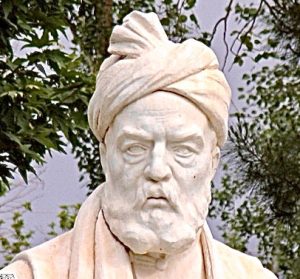
Picture 5- Even the Khorasani turbans all over Khorasan are tied to the crown style like Ferdowsi’s turban
One of Tajikistan’s greatest writers and poets, and the first president of the Tajik Academy of Sciences, Sadruddin Aini, also mentions the meaning of the word “Tajik” in one of his works “Tajdar”, which is also referred to by the famous Iranian scholar and orientalist Richard Fultz.[xvii]
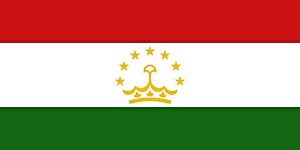
Picture 6: The crown on the official flag of Tajikistan
According to the above, it can be said with high probability that “Tajik” literally means “small crown” and “Taj Dara” is such an Iranian crown, although its term meaning means non-Turkic and non-Arab.
Genetic haplogroup of ancient Tajiks and Iranians
History and anthropology are parts of the humanities, and the humanities are not the exact sciences of mathematics, and sometimes various theories arise about a single problem in these sciences, some of which are far from the truth. For example, to identify the ancestry of a group of peoples, it is not possible to rely solely on their languages and artifacts, because migrations over the course of history to a land can slowly and gradually change people’s language, making their genetic identities completely different from those of previous generations. Therefore, at the beginning of the 21st century, with the advancement of genetic knowledge, the genetic haplogroup of human societies and its triad types (yDNA paternal haplogroup, maternal haplogroup, as well as genetic haplogroup of past generations Autosomal DND) were used to accurately identify and historical origins of different ethnic groups and peoples. It should be noted that since genetics is a part of the minute sciences, the answer it gives is precise and decisive, and there is no disagreement in which, like the humanities, there is no difference of opinion so that everyone distorts people’s identity according to his own taste or political interests and creates chaos and chaos in the scientific results. Among the three genetic indices: paternity, motherhood and the outcome of past generations, paternal haplogroup is commonly used in genealogical research. The genetic haplogroup of paternity has two characteristics that are very important in research: one is that the haplogroup is fixed behind the back and does not change over generations, and secondly, most warriors, soldiers, immigrants or invaders to countries in antiquity and throughout history were men, which is very easy to trace with this genetic index.
The results of genetic studies published on the genetic haplogroup of the people of Khorasan and North Khorasan (i.e. two countries of Tajikistan and present-day Afghanistan) show that more than 60 to 70 percent of the genetic haplogroup of these peoples or yDNA of these peoples is R1a and the ancient Iranian branch of this haplogroup or R1a-Z93. The genetic haplogroup R1a is the same as the haplogroup of the ancestors of the Aryans, Persians, and Indians and Skates, and Slavic peoples in Eastern Europe. This shows that about 70 percent of Tajik people are fathers in Iranian and Aryan fathers, and these results are scientific and conclusive and their accuracy is higher than blood tests to identify a father’s children.[xviii]
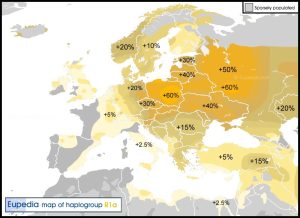
Diagram 1
In the diagram above (1) the percentage of men with Aryan haplogroup R1a is well represented among Slavs who are the heirs of Iranian skate tribes. This graph shows that about 60 percent of Slavs have the same haplogroup of ancestors of Skates and Persians, and people of present-day Tajikistan, Afghanistan and Iran. [xix]
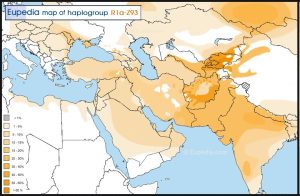
Diagram 2
In the second diagram, the percentage of a specific branch of the fatherly haplogroup R1a which is the branch of ancient Iranians and Iranian Aryans, R1a-Z93 is shown. Obviously, this fatherly haplogroup is more common in Tajikistan today than in other Iranian countries and territories, including Afghanistan or even the present-day country of Iran. Based on these researches, it can be said with certainty that about 70% of the people of modern Tajikistan are from the Aryans in Iranovich and ancient Persia.[xx]
“Dari” is the scientific name of Tajik language and three dialects of a common language; Tajik Dari, Pashto Dari and Persian Dari
Unfortunately, Iranology and Iranian linguistics, like most branches of Orientalism and anthropology, are not only objective and scientific, and political and geopolitical and geopolitical intentions as well as the deliberate division of the ancient heritage of early human civilizations play a role. A prominent example of such political bias can be seen in the name of the ancient “Aryan language”. What archaeological excavations and an objective and scientific look at history tell us is that the name of the common language spoken today in Tajikistan, Greater Khorasan (Afghanistan) and Iran and some other lands of Iranian civilization is “Ariyeh”. In two ancient inscriptions in the range of Iranian civilization, namely in the Dariush Inscription of the Achaemenid Empire in Bisotun[xxi] In Iran and also in the inscription of Kanishka Shah Kushani in Greater Khorasan (Afghanistan) known as the Rabatak Inscription[xxii] The name of this language is clearly “Aryeh”, which indicates that the ancestor name of this common language has always been the same in East to West of the Iranian plateau. After the Arab Muslim invasion, the unique nature of this language has always been preserved throughout the Iranian plateau with little change. The name of this language in the Greater Khorasan due to coexistence with another Iranian or Pashto language, the prefix “D” Pashto has been added and the name “Daariyeh” or “Dari” has been added. Poets and speakers of this language have always used the name of the door as Rudaki. In Ferdowsi’s Shahnameh, which is one of the masterpieces of this language, since part of the Shahnameh is the translation of the Sassanid god of the Persian era in the land of Persia, and in Pars their dialect was called “Parsik”, along with the Dari name Persian name for this language is also used. Little by little, over the centuries Persian dialect of “Arieh” or “Dari”, known as Persian language, which is actually not a separate language but a Persian dialect of “Dari”. Apart from these two names for a single language that has been formed throughout history, the name “Tajik” for another dialect of this language is a new and fabricated name that was invented for political motives in the former Soviet Union to separate the people of Tajikistan from Greater Khorasan and Iran. The name “Tajik language” is a new application since 1929 after the formation of the Tajikistan Socialist Republic within the former Soviet Union. The fact is that Tajik, like “Persian,” is an accent of the Ariyah language which is now called “Dari”. According to the above arguments, we have only one common language between the people of Tajikistan, Greater Khorasan (Afghanistan) and Iran, and the name of this common language is based on the oldest ancient inscriptions of “Ariyeh”, “Daariyeh” or “Dari” is the closest name to this ancient name. Therefore, scientifically and objectively, it can be said that the name of the language of these three countries is “Dari” with three dialects of “Tajik Dari”, “Dari Pashto” and “Persian Dari”.
Changing Dari language from Cyrillic and Arabic to Iranian script
The tragedy inflicted on speakers to “Dari Door” or “Persian Sugar” does not end in the name of their language and the human right to speak in their mother tongue, but the Abrahamic enemies of Iranian civilization have imposed two foreign and unscientific lines on them to further separate these people. The first imposed line is the “Koranic Kufi script”, which the Muslim Arabs after many massacres and genocides in Iran and the great Khorasan and the burning of most of Iran’s ancient libraries, including libraries of ancient “Gundi Shapur” in Khuzestan, and libraries of ancient Merv, Samarkand, Bukhara, Kharazm, Hegmataneh, and Aturpatgan, and after the destruction of millions of volumes of ancient Iranian books in ancient Avestan and Pahlavi and Aryeh languages As they have written in their own history books, such as “Fatuh al-Baladan Balad”, Iranians were forced to use it. The compulsion to use the “Qur’an script”, which later became known as “Arabic script”, was such that anyone who did not write this line was called kafir and was forced to pay the jizyah and subjected to the most severe sanctions and discrimination, and severely violated the social rights of writers in Pahlavi and Avestan and other lines of ancient Iran. Therefore, during the several centuries of the Iranian occupation, there was little way for Iranians to either emigrate from Iran, who did and many of them migrated to India under the name of “Persians”, or if they wanted to remain in Iranian lands, they would become Muslims and change their line to Arabic script, and even in many areas such as the Iranian cities of Ctesiphon and Baghdad[xxiii] And they will speak Arabic in their own tongues. It took fourteen centuries for the Samanid monarchs to create the “Iranian Renaissance” in Marv, Bukhara and Greater Khorasan, and to preserve human and Iranian knowledge of Islamic-Abrahamic religious prejudices, they opened the libraries left by the Arab Muslim invasions in Marv, Balkh and Bukhara to Iranians to translate those ancient sciences either into Dari language and Arabic script or Arabic to preserve these knowledges. Stay. Such a great translation movement during the Samanid era led to the acquisition of these knowledge to Europeans a few centuries later, and laid the groundwork for the “scientific and cultural renaissance of Europe” in the Middle Ages. Scientific books that were translated into Arabic only and had Iranian، Indian، and Greek origins are now read incorrectly and with Abrahamic prejudice، Islamic sciences and Arabic. The prejudice and insistence on Arabic reading of these sciences in Europe under the influence of the Abrahamic culture was such that the “Indian numerals” or digits in the decimal system, which have been used in India and Iran for thousands of years, have been falsely and deliberately called “Arabic numerals”. It should be noted that many Samanian scholars who translated ancient Persian knowledge into Arabic, were forced to translate the Persian words into Arabic translations due to the poverty of Arabic literature in the equivalence for scientific terminology at that time. Iranian scientific vocabulary such as “geometry” of Maarab “Hindachak” means “size” in Dari, and the word “chemistry” which is an Iranian “chemistry” and the word algorithm, which is the European interpretation of the name of the Iranian scientist “Kharazmi” and other words such as “amber” meaning electricity and “brid” means post and thousands of other words in this movement translating ancient Iranian scientific books into Arabic in the Samanid period, the footprints and fingerprints of the main sources of these sciences, which They were not produced in the Islamic era, but they were translated into Arabic for the sake of the religious tajer who called these sciences blasphemous or rewritten into Arabic and Dari language for their survival.
Imposing Arabic script despite the fact that due to the lack of vowels and having repeated letters, for example having four letters “z” (z, d, z, z) with four different pronunciations, three letters “s” (s, s, etc.) with three different pronunciations and two letters “t” (t, t) with two different pronunciations, not at all for “Dari” or “Persian”, which is an Indo-European language and full of vowels, and has only one pronunciation of the letters “z” or “t” and “s” and so on, It is not appropriate، so far it is used because of the influence of religious and pro-Islamic-imposed culture in Iran and Afghanistan. However, in Tajikistan another line was imposed on the speakers of the Dari language, which was for political reasons and to separate this section of Iranian people from other Iranian descents, and that was the Cyrillic script. After the formation of the Tajikistan Socialist Republic in 1929, which was part of the USSR, the Cyrillic script was gradually imposed on the Tajik people for political reasons and for solidarity with the Russian language script which was Cyrillic, which was the official line of the former USSR, to separate the Iranian identity of Tajik from other Iranian people. Although the Cyrillic script is a line made for Indo-European languages that have vowels and is more scientific than Arabic script which is by no means qualified to write Indo-European vowel languages such as “Dari”, this line is also designed for Slavic languages and does not have unique features of Iranian languages considered.
Although many former Soviet republics have changed their line to Latin script after independence, the Latin script also has serious deficiencies for the characteristics of “Dari” and other Iranian languages, and many sounds of Dari language such as “Ch” and “Sh” cannot be written with Latin script unless a combination of a few letters is made or contractual and unscientific marks are placed on them. On the other hand, although the “Avestan line” is by far one of the most complete lines in the world, and as the ancestor of the “Dari” or “Persian” language of today, i.e., the ancient Aryeh language, which is also called Avestan language, wrote this complete Avestan script, can also be written to this line today, but, this line is also not completely scientific and is used to write mathematical and chemical and physical formulas or computer programming languages. It is not appropriate in today’s world. Also, the Avestan line because it is not modern, makes the education process difficult and forces users to use several lines. Therefore, at the beginning of the 20th century, the distinguished Iranian linguist, historian and mathematician Zabih Behrouz wrote in two books with the names of “Dabireh”[xxiv] “Line and Culture”[xxv] In addition to discovering the secret of the invention of universal alphabets from ancient times to the present day, which is based on the drawing of lips, teeth, palates, mouth, tongue, throat, nose and miner when pronouncing different sounds, accordingly proposed to create natural alphabets for the Persian language. This new alphabet was very scientific and easy to learn for children, and any child and every human being could learn this scientific and natural alphabet in a few days. He called this natural alphabet “The Teacher Child” and proposed a line for adults and even deaf and blind people.


The natural alphabet proposed by Zabih Behrouz from the book “Dabireh”
Zabih Behrooz’s research seriously “Reza Hazoli” in the “Manifesto of the Iran Thinktank Manifesto”[xxvi] [xxvii]The Secret of Universal Alphabets and Transcriptions – The True History and Logic of Invention of the Alphabet
»[xxviii] He continued, and based on the logic of Behrouz natural line, and studied the Latin and Cyrillic mother line, which is the old “Ronic” line, suggested a line for Persian Dari language, which is called “Iranian script.”
He did. This line is based on the logic of Behrouz natural line rooted in the “Ronik” line of ancient Iranian skates and serum, and its similarities to Latin and Cyrillic script make it modern and suitable for scientific application, while independent line with scientific logic based on drawing sections, lips, teeth, mouth, nose,
Language, palate, and parchment are when pronouncing the sounds of Dari are Persian. Hazli also designed the computer application “Iranian Line” and its digital fonts.
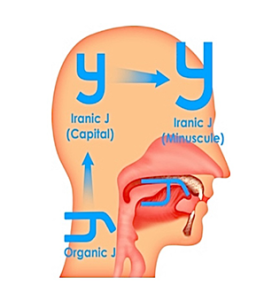
Method of drawing the Iranian alphabet sections in this sample
Method of drawing the cross section of letter “C” based on the shape of the language and the palate
Pronounced “c”
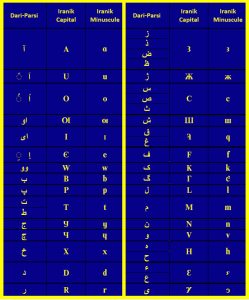
Chesley Proposed Alphabet Table
It is hoped that with the cultural and political efforts of the lovers of Iranian civilization and Dari, Iranic script in the future will be the unifying line for three dialects of Dari language, namely “Tajik Dari”, “Pashto Dari Dari” and “Persian Dari”, and even other languages in the field of Iranian civilization.
From what has been said, it can be concluded that we have a language called “Ariyeh” or “Dari”, which unfortunately today is written in non-Iranian scripts in both Iran and Afghanistan and Tajikistan. It is hoped that the unique line of this language in the future will be “Iranic” scientific line, which can be called “Dari” language, “Dari” or “Aryeh line” for coordination. It should be noted that, unlike the “dialects” within a language whose diversity makes the language rich and beautiful, the writing system of a language must be one so that there is no chaos and misunderstanding among the people and countries that speak that language. The best example of this is “English”, which, despite having many dialects in different countries, is the same alphabet and the basis of its writing is to teach and understand people with any standard accent. Hopefully the day when the language of Aryeh or Dari, with all its various dialects, is adorned with “the single scientific and natural line of Aryeh or Dari.”
Sources
[i]http://www.avesta.org/ka/yt10sbe.htm
[ii] https://history.stackexchange.com/questions/68874/what-is-the-nature-of-the-hyksos-territory-in-transjordan-and-northern-arabia-de
[iii] http://www.avesta.org/ka/yt10sbe.htm
[iv]
“ĒRĀN-WĒZ – Encyclopaedia Iranica”
. www.iranicaonline.org. Retrieved 27 October 2019.
[v] https://en.wikipedia.org/wiki/Andronovo_culture
[vi] https://en.wikipedia.org/wiki/Bactria%E2%80%93Margiana_Archaeological_Complex
[vii] https://en.wikipedia.org/wiki/Yaz_culture
[viii] Unfortunately, modern archaeological science is influenced by the prejudice of religious people with Judeo-Christian beliefs, who only make the Bible and the Old Testament a source for naming ancient sites and completely ignore other ancient texts such as Avesta and Rigveda and their geography.
[ix] https://en.wikipedia.org/wiki/Bactria%E2%80%93Margiana_Archaeological_Complex
[x] https://en.wikipedia.org/wiki/Ariana
[xi] The Columbia Encyclopedia, Sixth Edition, 2008
[xii] Ri. Schmitt, ‘ARIA’, Encyclopaedia Iranica, 1986
[xiii] Encyclopaedia Iranica: ĒRĀN-WĒZ. By D. N. MacKenzie: By late Sasanian times Ērān-wēz was taken to be in Western Iran: according to Great Bundahišn (29.12) it was “in the district (kustag) of Ādarbāygān.” But from Vendidad 1 it is clear that it has to be sought originally in eastern Iran, near the provinces of Sogdiana, Margiana, Bactria, etc., listed immediately after it.
[xiv] https://www.britannica.com/topic/history-of-Central-Asia-102306/Soviet-rule
[xv] http://varnashahr.ir/varamin-city/varamin-history/
[xvi] Tiara
[xvii] Richard Foltz, A History of the Tajiks : Iranians of the East, Bloomsbury Publishing, 2019; P. 99.
[xviii] https://www.eupedia.com/europe/Haplogroup_R1a_Y-DNA.shtml#Indo-Iranian
[xix] https://www.eupedia.com/europe/Haplogroup_R1a_Y-DNA.shtml#Indo-Iranian
[xx] https://www.eupedia.com/europe/Haplogroup_R1a_Y-DNA.shtml
[xxi] http://www.avesta.org/op/op.htm
[xxii] https://www.liquisearch.com/rabatak_inscription/full_text
[xxiii] Baghdad is an Iranian town with an Iranian name ( Baghdad : Bigdad: Bage or bagh = God + Dad = given and gifted and overlapping the meaning of God’s gift) was in the suburb of Ctesiphon, the capital of the Sasanian and Parthian and the center of Iranian Manichaean, which gradually lost its Iranian identity with the Arab prejudice of the Muslim caliphs and became a city with an Arabic identity and language.
[xxiv] Behrouz, Zabih, Dabireh, Iran Koodeh, Forouhar Publishing Second Edition, 1984
[xxv] Second, Behrooz, Zabih, Khat va Farhang, Iran Koodeh No. 8, Forouhar Publishing 1984
[xxvi] Hazli, Reza, Manifesto of Iranzamin think tank, Amazon Press, 2015
[xxvii] https://kaaa.info/dp/articles-researches/default7/
[xxviii] https://kaaa.info/dp/articles-researches/article-16/
Be the first to write a review
Post Views::
25

- +1 (415) 685 8888
- info@mehriran.tv
-
St. Kilda Road towers level 1, 1 Queens Road Melbourne,
Victoria 3004 Australia
Copyright © MehriranTV 2012 - 2024
